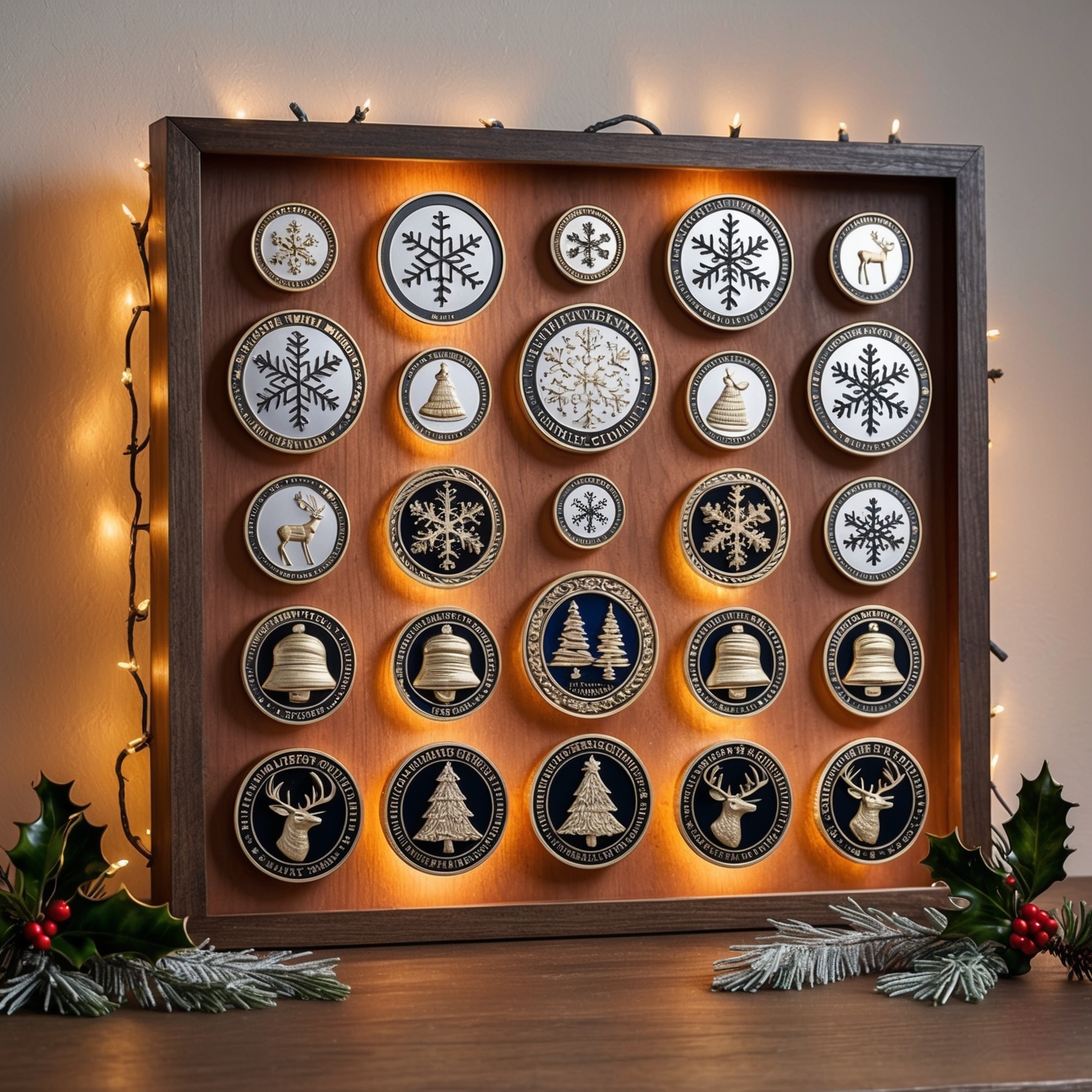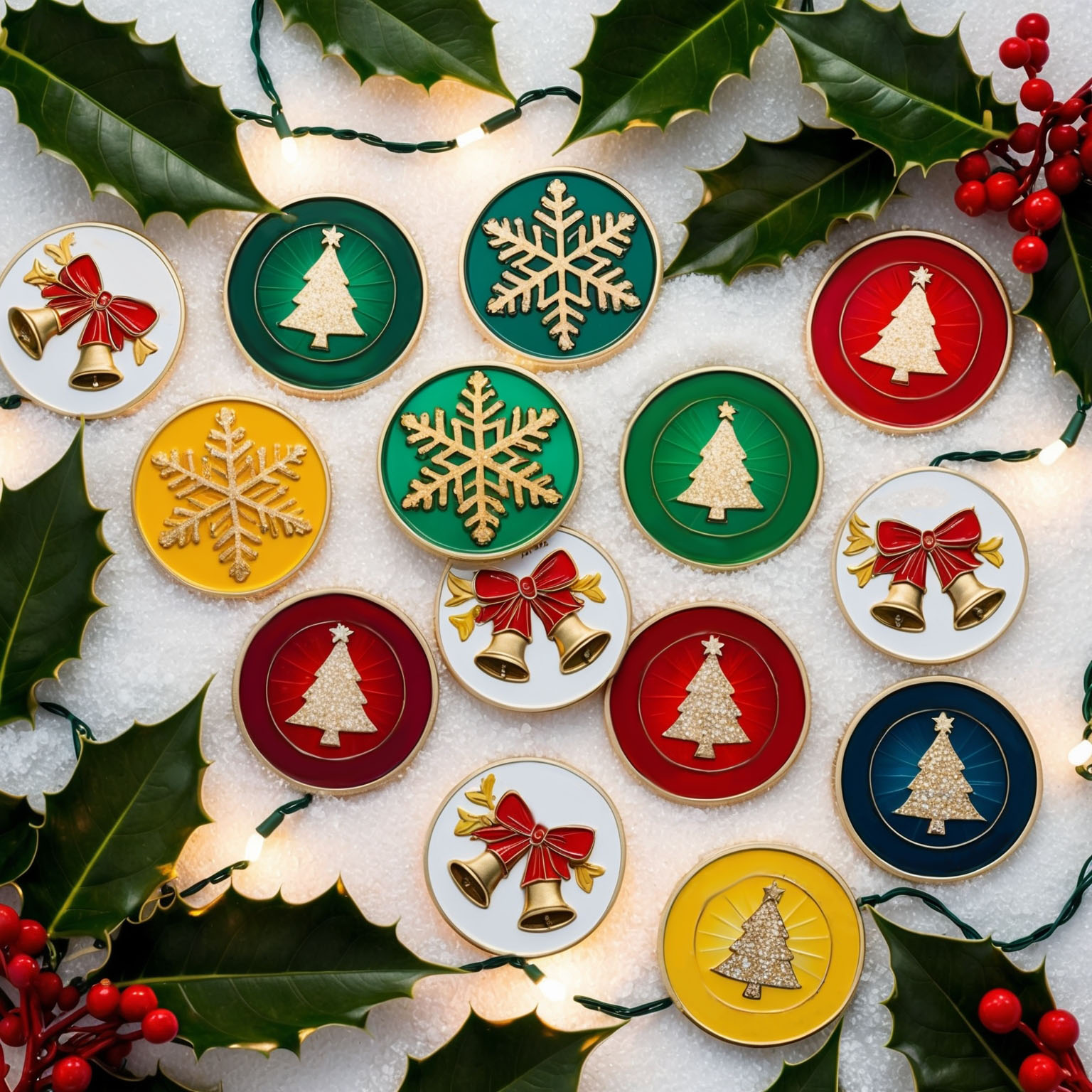Challenge coins have long been a symbol of honor, unity, and recognition within various organizations, particularly in the military and government sectors. These small, intricately designed medallions carry significant meaning, often commemorating special events, achievements, or affiliations. The tradition of challenge coins has evolved significantly over time, especially within government contexts, where they serve as tokens of respect, appreciation, and prestige. This article explores the rich history and evolving role of challenge coins in government history, examining their origins, symbolic significance, and the lasting impact they have had on institutions and individuals alike.
The Origins of Challenge Coins
The exact origins of challenge coins are somewhat mysterious, with several competing stories tracing their beginnings. While the tradition is most commonly associated with the military, its roots likely extend back to ancient times.
- Ancient Traditions: The concept of awarding coins or medallions for valor and achievement dates back to ancient civilizations. For example, Roman soldiers were often rewarded with coins to mark their service or bravery. These early tokens served both as a form of currency and a symbol of honor, much like modern challenge coins.
- World War I and the Modern Tradition: The modern tradition of challenge coins is often linked to World War I. One popular story tells of an American pilot who carried a coin bearing his unit’s insignia, which ultimately saved his life by proving his identity after being captured by enemy forces. This story highlights the coin’s role as a symbol of identity and belonging.
- Post-War Expansion: After World War II, the use of challenge coins expanded beyond the military. They began to be adopted by various government agencies, including law enforcement, intelligence, and diplomatic services. This expansion marked the beginning of a broader tradition, where challenge coins were used to signify affiliation, recognize achievements, and foster a sense of unity.
The Evolution of Challenge Coins in Government
As challenge coins gained popularity, their use and significance within government contexts evolved. Today, these coins are an integral part of the culture in many government agencies, each with its unique traditions and meanings.
- Presidential Challenge Coins: One of the most prestigious forms of challenge coins is the Presidential Challenge Coin. These coins are typically awarded by the President of the United States to military personnel, diplomats, and other distinguished individuals. The design often features the Presidential Seal and the incumbent President’s name, symbolizing a high honor and personal recognition from the nation’s leader.
- Congressional and Legislative Coins: Members of Congress and other legislative bodies sometimes commission their own challenge coins. These coins are used to recognize constituents, staff, or individuals who have made significant contributions to legislative initiatives. The designs often include symbols of the legislative body, such as the Capitol Building or state seals.
- Law Enforcement and First Responder Coins: Challenge coins have become a common way to recognize the bravery and service of law enforcement officers and first responders. Agencies such as the FBI, CIA, and various police departments issue coins to commemorate special units, operations, or outstanding achievements. These coins often feature badges, eagles, or other symbols of authority and protection.
- Diplomatic and International Coins: In the realm of diplomacy, challenge coins serve as tokens of goodwill and recognition. Diplomats and ambassadors often exchange coins during international visits or negotiations, fostering relationships and honoring cultural exchanges. These coins may feature national flags, emblems, or symbols of peace and cooperation.
The Symbolism and Design of Government Challenge Coins
The design and symbolism of government challenge coins are carefully crafted to convey specific messages and values. The elements chosen for these coins often reflect the identity, mission, and history of the issuing organization.
- Official Emblems and Seals: Many government challenge coins prominently feature official emblems, seals, or insignia. These symbols are instantly recognizable and lend an air of authority and legitimacy to the coin. For example, the Great Seal of the United States, the emblem of a federal agency, or the seal of a particular military branch might be central to the design.
- Mottos and Phrases: Mottos, phrases, or quotes are commonly included on challenge coins. These words often encapsulate the mission or values of the organization. For example, “E Pluribus Unum” (Out of Many, One) reflects the unity of the United States, while “Semper Fidelis” (Always Faithful) signifies the commitment of the Marine Corps.
- Iconography and Imagery: The imagery used on government challenge coins often includes iconic elements such as eagles, flags, stars, and other national symbols. These images evoke feelings of patriotism and pride. Additionally, specific symbols relevant to the agency’s work, such as scales of justice, torches of freedom, or symbols of law enforcement, may be featured.
- Color and Material Choices: The use of color and material in challenge coin design is significant. Government coins often use official colors—such as red, white, and blue for U.S. coins—or metallic finishes that convey prestige and durability. The choice of metal, such as brass, silver, or gold, can also reflect the level of honor associated with the coin.
The Role of Challenge Coins in Government Culture
Challenge coins play a multifaceted role in government culture, serving as tools for recognition, unity, and motivation. They are used in various ceremonies and traditions, each with its unique significance.
- Recognition and Awards: Challenge coins are frequently used to recognize individuals for their service, achievements, or contributions. They are often presented in formal ceremonies or special occasions, accompanied by a handshake and a personal message. This practice fosters a sense of appreciation and encourages continued excellence.
- Building Unity and Morale: Within government agencies, challenge coins help build a sense of unity and camaraderie. By carrying a coin, individuals feel connected to their organization and colleagues. This sense of belonging can be especially important in high-stress or high-risk environments, such as law enforcement or military service.
- Traditions and Ceremonies: The exchange of challenge coins has become a cherished tradition in many government contexts. For example, military officers may exchange coins when visiting other units, signifying respect and mutual recognition. Similarly, diplomats may present coins to foreign dignitaries as a gesture of goodwill and partnership.
- Commemoration and Legacy: Challenge coins are often used to commemorate significant events, anniversaries, or historical milestones. They serve as tangible reminders of important moments in an organization’s history and the individuals who contributed to them. These coins are often kept as mementos, passed down through generations, and displayed as part of a legacy.
The Impact of Challenge Coins on Individuals and Institutions
The impact of challenge coins extends beyond their immediate recipients, influencing both individuals and institutions in meaningful ways.
- Personal Pride and Motivation: For individuals, receiving a challenge coin is a source of personal pride. It acknowledges their hard work, dedication, and contributions. This recognition can be a powerful motivator, inspiring recipients to continue striving for excellence and to uphold the values of their organization.
- Institutional Identity and Tradition: For institutions, challenge coins contribute to a sense of identity and tradition. They embody the values, mission, and history of the organization, serving as a symbol of continuity and stability. The tradition of challenge coins helps reinforce the culture and ethos of an institution, fostering loyalty and respect among its members.
- Public Perception and Outreach: Challenge coins also play a role in shaping public perception and outreach. They are often used in public relations efforts, given to civilians, or displayed in public spaces. This practice helps build goodwill and positive relationships with the community, enhancing the institution’s image and reputation.
- Collectibility and Historical Significance: Over time, challenge coins can become valuable collectibles, sought after by collectors and historians. They serve as historical artifacts that offer insights into the culture, achievements, and values of the issuing organizations. The collectibility of these coins adds an additional layer of prestige and significance.
Notable Examples of Government Challenge Coins
Throughout history, several notable examples of government challenge coins have stood out for their design, significance, and impact.
- The White House Coin: The White House has its own challenge coin, often presented to visiting dignitaries, military personnel, and other distinguished guests. This coin typically features the White House on one side and the Presidential Seal on the other. It symbolizes the honor of being recognized by the highest office in the United States.
- The CIA Memorial Wall Coin: The CIA issues a special challenge coin to honor those who have given their lives in service to the agency. This coin is associated with the CIA Memorial Wall, which commemorates fallen officers. The coin’s design often includes stars representing those honored, along with the CIA emblem.
- The Department of Homeland Security (DHS) Coin: The DHS challenge coin often features the department’s seal, along with symbols representing its various agencies, such as Customs and Border Protection (CBP) and the Federal Emergency Management Agency (FEMA). This coin recognizes the diverse and critical roles of the DHS in protecting national security.
- The Congressional Medal of Honor Society Coin: This coin is associated with the recipients of the Medal of Honor, the United States’ highest military award for valor. The coin often includes the Medal of Honor insignia and the Society’s emblem. It serves as a symbol of the extraordinary bravery and sacrifice of its recipients.
The Future of Challenge Coins in Government
As we look to the future, the role and design of challenge coins in government contexts are likely to continue evolving. Emerging technologies, cultural changes, and new challenges will shape the next generation of these iconic tokens.
- Technological Innovations: The integration of digital technologies, such as QR codes and NFC chips, could add interactive elements to challenge coins. These features could link to digital content, such as videos, official documents, or historical archives, providing a richer and more engaging experience.
- Diversity and Inclusion: As government agencies increasingly emphasize diversity and inclusion, challenge coins may reflect a broader range of cultural symbols and themes. This inclusivity can help recognize the diverse backgrounds and contributions of government employees and partners.
- Sustainability and Ethical Considerations: There may be a growing focus on sustainable and ethical practices in the production of challenge coins. This could include the use of recycled materials, eco-friendly production processes, and fair labor practices.
- Globalization and International Exchange: The tradition of challenge coins is likely to continue expanding globally, with more countries and international organizations adopting the practice. This globalization could lead to a greater exchange of cultural symbols and values, fostering international cooperation and understanding.
Conclusion
Challenge coins have a storied history and a profound impact within government contexts. From their origins as military tokens of honor to their current role as symbols of recognition, unity, and prestige, challenge coins have evolved into powerful cultural artifacts. They honor service, commemorate achievements, and reinforce the values and traditions of the institutions that issue them. As challenge coins continue to evolve, they will remain an enduring symbol of the legacy and prestige of government service, honoring the individuals and institutions that uphold the ideals of duty and public service.
If you are interested in purchasing high-quality custom challenge coins you can call us at 877-885-2497 or fill out one of our FREE QUOTE FORMS.



